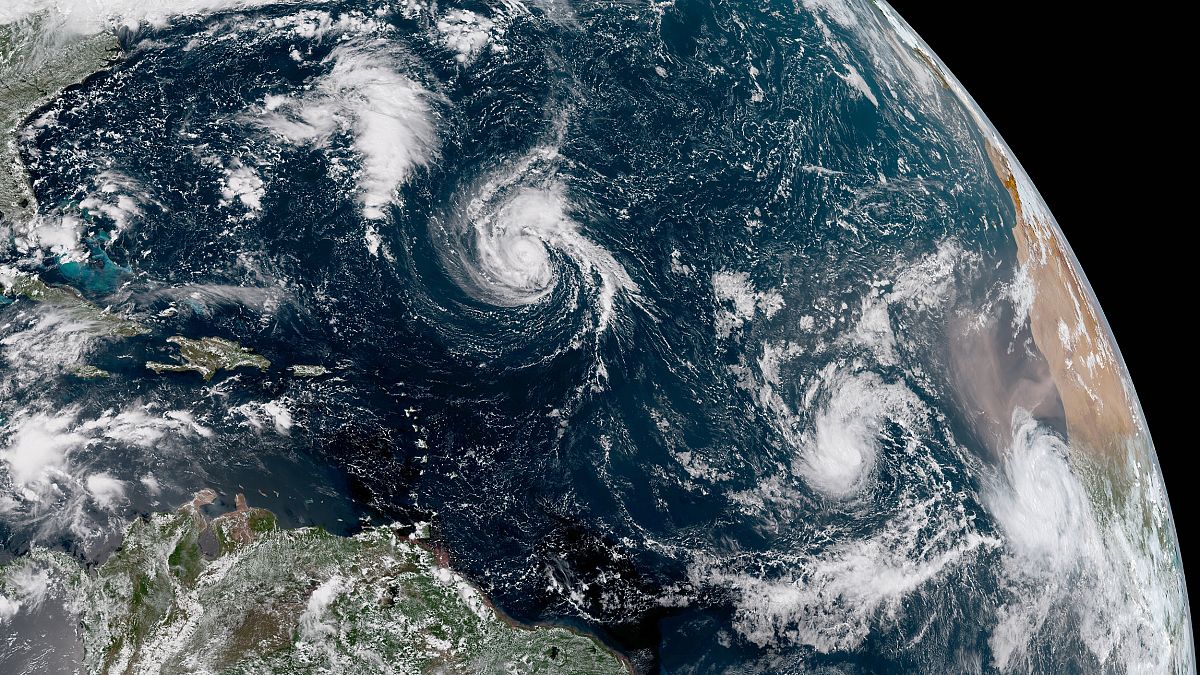Storms in the northeast Pacific have generated the most 'accumulated cyclone energy' on record for the season thus far.
As forecasters predicted an increased likelihood that Tropical Storm Florence could strengthen and strike somewhere along the East Coast, some experts said it was another symptom of a historic and unique hurricane season that could be influenced by global warming.
With the Eastern Seaboard on alert, storms in the northeast Pacific Ocean have generated the most "accumulated cyclone energy" on record through the first week September, said Phil Klotzbach, an atmospheric science researcher at Colorado State University.
Usually when the Pacific is alive with storm energy the Atlantic Ocean is not. The synergistic high and low activity modes are well known to scientists, and this was supposed to be the Pacific's year to make waves.
And then Florence came along.
"The thing that's interesting now is the Pacific is still active, but the Atlantic is very active, which isn't normal," Klotzbach said. "I'm surprised to see the Pacific and Atlantic active at the same time."
WEATHER WATCH
The researcher said this happened to a lesser extent in 2016, but notes that this time around the Atlantic is displaying unusual fury after being slated for relative hibernation.
There have been nine named storms in the Atlantic — above average for the period — and 15 in the Pacific since their hurricane seasons began on June 1 and May 15, respectively, Klotzbach said.
Since 1970, the northeast Pacific and Atlantic have had above-average accumulated cyclone energy in the same year only twice — in 1998 and 2016, Klotzbach said via email.
It may be too soon to blame climate change for the anomalous weather. But experts say there are correlations between what's happening in the seas off the United States and what global warming has been doing for years — heating up the waters.
Warming waters are fueling more powerful and more destructive storms, which have generally eluded the United States so far this season, climate researchers say.
"We do know these changes are happening," said Kristy Dahl, a senior climate scientist at the Union of Concerned Scientists. "There is at least a hypothetical connection between hurricanes and warming ocean temperatures."
It's not clear, she added, "how much is being caused by humans and how much is just natural variability."
But what weather watchers are seeing in the Atlantic and Pacific is "consistent with climate change," Dahl said.
Forecasters said Florence is expected to become a Category 3 hurricane by Monday, and Klotzbach has noted that a new tropical depression, since named Helene, has formed in the eastern portion of the Atlantic.
CLIMATE CHANGE
Meanwhile in the Pacific, record warm waters along the coast of Southern California and beyond are seen as a prelude to an El Niño weather pattern in winter that sometimes includes higher-than-normal rainfall, experts say.
El Niño years usually go hand-in-hand with mild hurricane seasons in the Atlantic and active ones in the Pacific. But not this year. "Warming waters could exacerbate the issue" of hurricanes in the Pacific, Klotzbach said.
In August, Hurricane Lane in the central Pacific reached top power to Category 5 but weakened to a tropical storm by the time it brushed by the Hawaiian islands. Still, it dumped 40 inches of rain on the Big Island and caused flood damage throughout the island chain.
On Friday, Hurricane Olivia created sustained winds of 100 mph and was headed in the general direction of the Hawaiian islands, according to the Central Pacific Hurricane Center.
Dennis Feltgen, a meteorologist at the National Hurricane Center in Miami, is skeptical of the argument that the dual-ocean upheaval is rare.
He pointed out that the Atlantic and the Pacific are living up to the National Oceanic and Atmospheric Administration's outlook for the season: near or below-average action in the Atlantic, with nine to 13 named storms, and near or above-average output in the Pacific, with 14 to 20 named storms.
It's "not at all unusual," Feltgen said via email.
However, with the Pacific season only halfway through — it runs roughly from June 1 through Dec. 1 — it has already reached the low end of the National Hurricane Center's prediction.
"We're busy trying to figure out what's happening in the Pacific, particularly in the central Pacific," which is a hub of storm activity, said Peter Donaldson, a forecaster with the Central Pacific Hurricane Center.
"The season is not over, but we can already say that's a pretty high number," he said.
The saving grace of an active hurricane season in the Pacific is that the ocean is vast and humanity is virtually a needle in a haystack, often resulting in fewer deaths and less damage in the United States and its territories than when the Atlantic kicks up, Donaldson said.
Conditions, including warmer water farther north than in the past, are nonetheless ripe for more storms with more power.
"It's been a busy season," Donaldson said. "Whether it will be a record-breaking season, it's too early to say."
